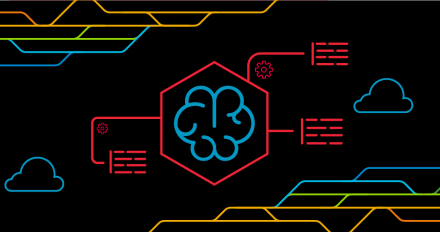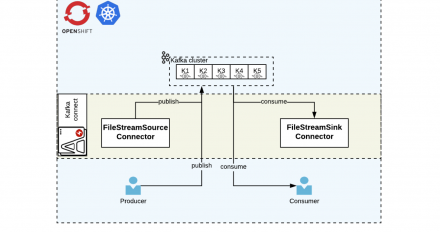Faisal Masood's contributions

Article
The machine learning life cycle, Part 1: Methods for understanding data
Faisal Masood
Explore different data visualization methods that can help you better understand your data and improve your machine learning models.

Article
Understanding Red Hat AMQ Streams components for OpenShift and Kubernetes: Part 3
Pramod Padmanabhan
+1
This article explored tools that can help us monitor Red Hat AMQ Streams.

Article
Understanding Red Hat AMQ Streams components for OpenShift and Kubernetes: Part 2
Pramod Padmanabhan
+1
We explore Red Hat AMQ Streams components such as Kafka Connect, Kafka Bridge, and Mirror Maker.

Article
Understanding Red Hat AMQ Streams components for OpenShift and Kubernetes: Part 1
Pramod Padmanabhan
+1
We explore Red Hat AMQ Streams basics and its components and show to create a basic Red Hat AMQ cluster on Red Hat OpenShift.

Article
Project Loom: Lightweight Java threads
Faisal Masood
This article explains how the use of lightweight threads, supported by Project Loom, can help you write scalable code in Java.

Article
Using a Kotlin-based gRPC API with Envoy proxy for server-side load balancing
Faisal Masood
gRPC--a modern, open source remote procedure call (RPC) framework that can run anywhere--provides better performance, less boilerplate code to manage, and a strongly typed schema for microservices in addition to other benefits. This article demonstrates building a full gRPC-based server and client written in Kotlin. Then it shows how to use Envoy to provide server-side load balancing between multiple instances of the service.

Article
Writing better Spring applications using SpringFu
Faisal Masood
Spring has a new way to code to and it's called Spring Functional or SpringFu. This article uses Kotlin to showcase some of the benefits--such as the ability to write cleaner, more-readable code and gain more flow control--you get from SpringFu.

Article
How Kotlin's coroutines improve code readability
Faisal Masood
You can write more-readable code using Kotlin's coroutines feature. in my opinion, coroutines provide a cleaner approach than reactive programming.

The machine learning life cycle, Part 1: Methods for understanding data
Explore different data visualization methods that can help you better understand your data and improve your machine learning models.

Understanding Red Hat AMQ Streams components for OpenShift and Kubernetes: Part 3
This article explored tools that can help us monitor Red Hat AMQ Streams.

Understanding Red Hat AMQ Streams components for OpenShift and Kubernetes: Part 2
We explore Red Hat AMQ Streams components such as Kafka Connect, Kafka Bridge, and Mirror Maker.

Understanding Red Hat AMQ Streams components for OpenShift and Kubernetes: Part 1
We explore Red Hat AMQ Streams basics and its components and show to create a basic Red Hat AMQ cluster on Red Hat OpenShift.

Project Loom: Lightweight Java threads
This article explains how the use of lightweight threads, supported by Project Loom, can help you write scalable code in Java.

Using a Kotlin-based gRPC API with Envoy proxy for server-side load balancing
gRPC--a modern, open source remote procedure call (RPC) framework that can run anywhere--provides better performance, less boilerplate code to manage, and a strongly typed schema for microservices in addition to other benefits. This article demonstrates building a full gRPC-based server and client written in Kotlin. Then it shows how to use Envoy to provide server-side load balancing between multiple instances of the service.

Writing better Spring applications using SpringFu
Spring has a new way to code to and it's called Spring Functional or SpringFu. This article uses Kotlin to showcase some of the benefits--such as the ability to write cleaner, more-readable code and gain more flow control--you get from SpringFu.

How Kotlin's coroutines improve code readability
You can write more-readable code using Kotlin's coroutines feature. in my opinion, coroutines provide a cleaner approach than reactive programming.
